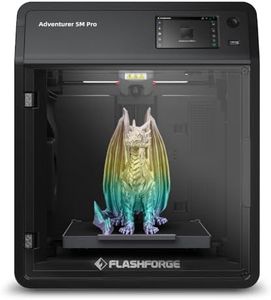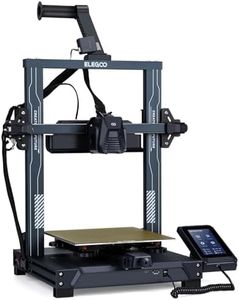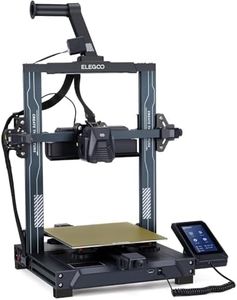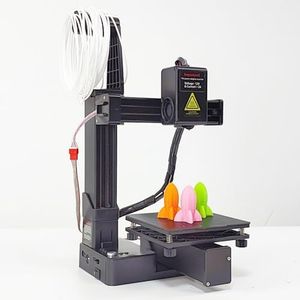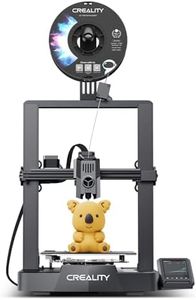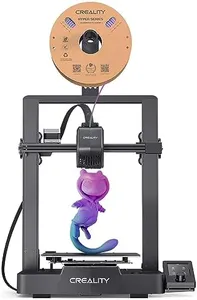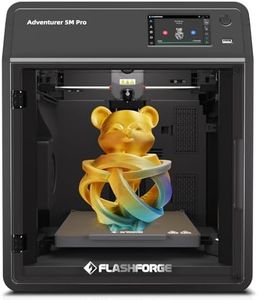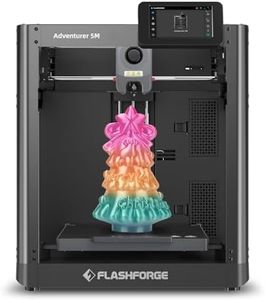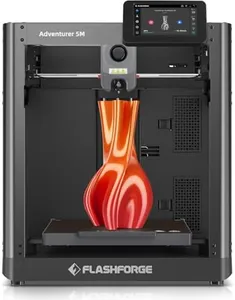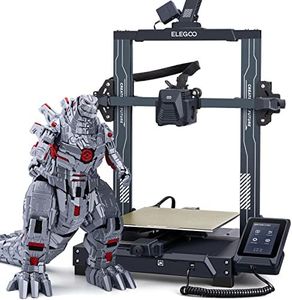We Use CookiesWe use cookies to enhance the security, performance,
functionality and for analytical and promotional activities. By continuing to browse this site you
are agreeing to our privacy policy
10 Best 3D Printers Under 500
From leading brands and best sellers available on the web.Buying Guide for the Best 3D Printers Under 500
Choosing the right 3D printer can be a rewarding experience if you match its features with your needs and expectations. There are a variety of 3D printers out there, even in more affordable ranges, and considering the specs that matter most will help you select a model that fits your skill level and the types of projects you plan to undertake. Rather than focusing on flashy extras, it's helpful to understand the basics of how 3D printers work, what features are essential, and how certain specs affect what you can make and how easy the process will be.Print VolumePrint volume describes the maximum size of an object your printer can create, often given as width x depth x height. This is important because it sets a boundary on your project designs—if you want to make larger items, you'll need a bigger print volume. Small print volumes (under 150mm in any dimension) are great for small figurines or prototypes and take up less space. Medium print volumes (around 200mm to 250mm) offer more flexibility for household items or bigger models, while large print volumes (over 250mm) can handle sizable projects but typically make the printer bulkier. Think about the objects you wish to make most often, and choose a volume that matches your ambitions without excessive size you might never use.
Print ResolutionPrint resolution refers to how fine the details your printer can produce, often measured in microns (a smaller number means finer details). A high resolution (50-100 microns) is best if you care about detailed figurines or intricate models, while a lower resolution (150-300 microns) is usually faster and fine for practical parts or less detailed prints. The right resolution depends on your main goal: for functional prototypes, a higher number (lower quality) is quicker and sufficient; for artistic or showcase models, aim for a lower number for better surface quality.
Supported Filament TypesFilament type tells you what materials the printer can use to make objects. Common filaments are PLA and ABS, good for beginners because they’re easy to work with. Some printers can handle more types like PETG, TPU (flexible), or even composite filaments. Look for a printer that supports a wide range of materials if you want to experiment; otherwise, a basic selection is enough for standard prints. Your choice should reflect what kind of objects you’ll print—household gadgets, sturdy parts, or creative art—and how much you plan to explore different materials in your projects.
Ease of Assembly and UseThis refers to whether the printer comes pre-assembled or as a kit, and how user-friendly the general interface is. A pre-assembled printer is best if you want to start printing immediately and avoid tinkering. Kits require some setup and are better if you enjoy building things and want to learn about how the printer works. Also, consider menu screens: touchscreens and clear instructions make daily use easier, especially if you’re a beginner. Choose a level of assembly and user interface that matches your comfort with technology and your patience for setup.
Heated BedA heated bed helps printed objects stick during printing and reduces warping, especially with certain filaments like ABS. Printers without heated beds are usually limited to easier materials like PLA. If you plan to use a range of materials or want more reliable, smooth prints, look for a heated bed. If you’ll stick to basic filaments and smaller objects, it’s less critical. Your planned filament type and your desire for hassle-free printing can guide your decision here.
Connectivity OptionsConnectivity covers how you send print files to your machine (USB, SD card, Wi-Fi). SD cards and USB are reliable and simple, suited to most users who prepare prints on a computer first. Wi-Fi brings convenience for wireless transfers and remote control but can be more complex to set up. If you prefer a straightforward process, choose SD or USB; opt for Wi-Fi if you want modern features and don’t mind setting up your network.
Community and SupportA printer with an active online user community and good manufacturer support makes troubleshooting and learning much easier. Even if this isn’t a hardware feature, it influences your experience. Beginners and those planning to try new projects benefit from having guides, forums, and quick help available. If you like learning from others’ experiences and want help when stuck, prioritize brands or models with strong support and a large user base.
